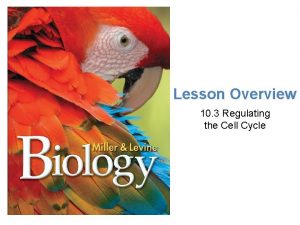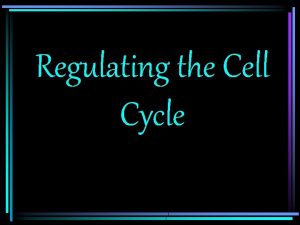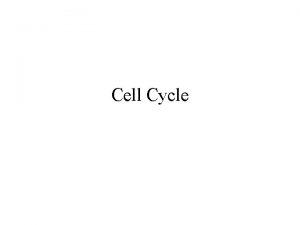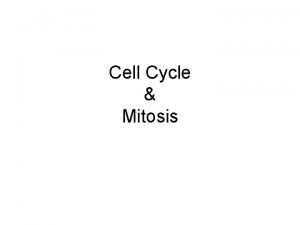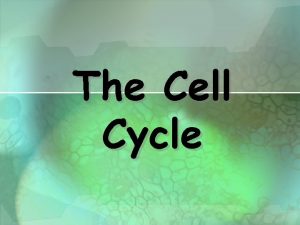Regulating the Cell Cycle 10 3 Topic Regulating






- Slides: 6

Regulating the Cell Cycle 10. 3 • Topic: Regulating the Cell Cycle • Learning Target: I can explain how cells know when to divide.

Regulating the Cell Cycle: 10. 3 Cell growth and division can be turned on and off • For example, when an injury such as a broken bone occurs, cells are stimulated to divide rapidly and start the healing process. The rate of cell division slows when the healing process nears completion.

Regulation the Cell Cycle: 10. 3 • Cyclins: Proteins that regulate the timing of the cell cycle in eukaryotic cells. • This graph show cyclin levels change throughout the cell cycle in fertilized clam eggs.

Regulating the Cell Cycle: 10. 3 Types of Cyclins Regulatory Proteins • Internal Regulators: are proteins that respond to events inside a cell. They allow the cell cycle to proceed only once certain processes occurs inside the cell. • External regulators: are proteins that respond to events outside the cell. They direct cells to speed up or slow down the cell cycle. • Growth factors: are external regulators that stimulate the growth and division of cells. They are important during embryonic development and wound healing

Regulating the Cell Cycle: 10. 3 Apoptosis • Apoptosis is a process of programmed cell death. • Apoptosis plays a role in development by shaping the structure of tissues and organs in plants and animals. • For example, the foot of a mouse is shaped the way it is partly because the toes undergo apoptosis during tissue development.

t: 10. 3 S • O

